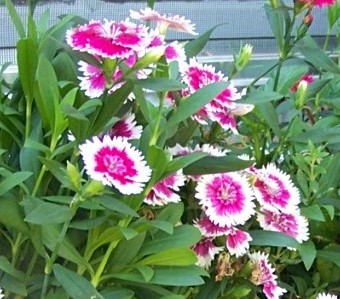Perpetual and prolific
That's not all. Most biennials self-sow, but not so promiscuously that you curse the moment you introduced them. I've banned forget-me-nots from my garden for this reason. Some years, I've weeded out more forget-me-not than chickweed, but you don't have to worry about this with the ones I recommend. There will be a scattering of offspring all around the parent plant, but not willy-nilly all over the garden. You can leave the seedlings where they are, thinning them out to give them enough room to thrive, or you can transplant them to another place (see opposite).
They're invaluable in their season of flowering too. In both the cutting garden and ornamental garden, the turn of the season between spring and summer can be a momentary blip in the color bonanza. Tulips are over and the bulk of annuals haven't yet got going. Biennials, along with autumn-sown hardy annuals, plug this gap, flowering prolifically from the middle of May. The demonstration gardens at the Chelsea Flower Show are always stacked with biennials - they can be guaranteed to flower in that crucial third week of May.
Which biennials to grow
My favorite biennial is the Iceland poppy (Papaver nudicaule 'Meadow Pastels'). No one should be without this plant. It's the best cut flower on my whole seed list. If you sear the stems in boiling water for thirty seconds, it lasts a week in water. You can pick it in full flower, or in tight bud and it will open as it stands in the vase. But don't just think of it as a cut flower. I love it in the rest of the garden too. By early May it's covered in huge, saucer-sized blooms, with ten to fifteen flowers on each plant. They're like crumpled swatches of fine silk, a palmful on the end of each stem. I love the colors in this mix - pink, white, cream, primrose and orange - bright and pale together; and each is scented like a Tazetta narcissus. If you don't want mixed colors, go for P nudicaule 'Red Sail', which is just as good - a single color, the red-orange of tomato soup, but without the scent. Drifts of both these plants look good in late spring and they'll still be looking good in late summer if you keep picking the flowers - live- rather than dead-heading, not allowing them to run to seed.
You can visit this flower guide for more information about this article.

No comments:
Post a Comment